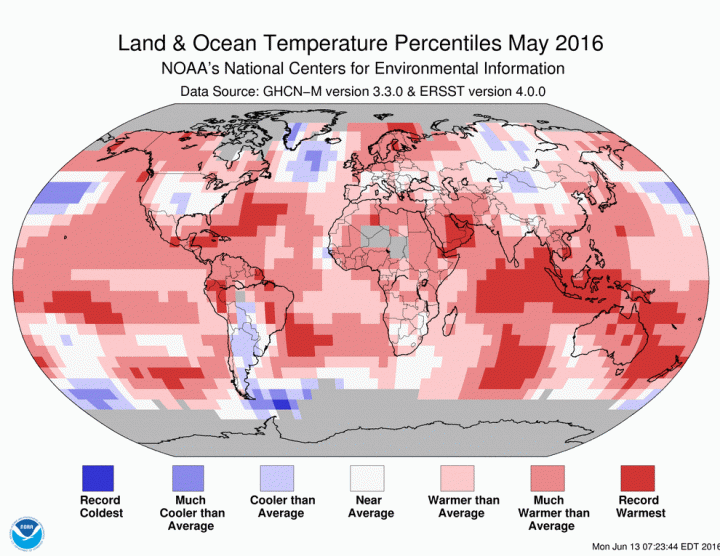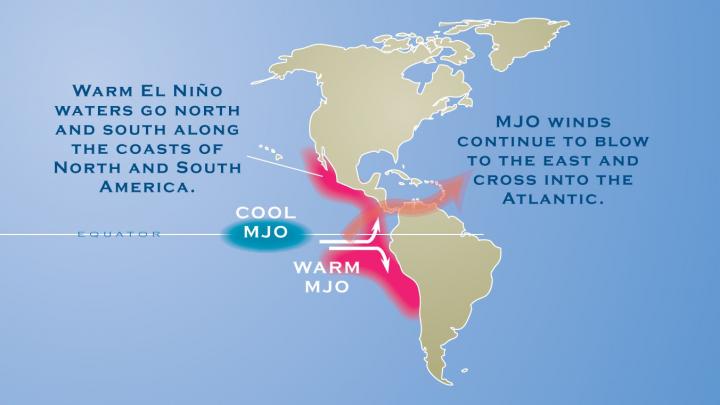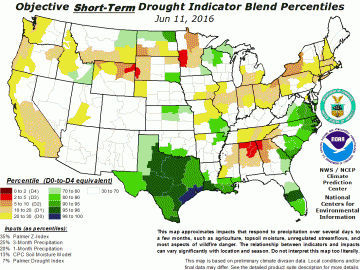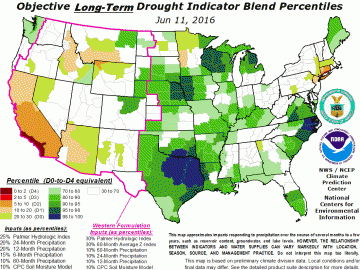What does it take to boil an egg? Submerge it in hot water. What does it take to boil a continent? We are finding out with this hot and humid weather.
North America is surrounded by hot water and summer breezes are wafting that hot humid air inland. This last weekend, almost everyone got to “Feel the Burn.” 
The oceans are hot and that hot air is going to flow inland over the next couple of months.
A major El Niño just ended. Measurements last month claimed this was the hottest May on record. Now the air masses from the tropics will dominate summer, and they are hot, Hot, HOT! As a result, most of the US and large parts of Canada are steaming.
Even though the hot El Niño has officially ended, that hot water has not disappeared. The hot tropical Pacific water crashes into South America and then flows north and south along the west coasts of the Americas. The prevailing westerly winds carry that hot marine air inland, creating some nasty heat in the western and particularly the southwestern states. Expect California, which declared its drought emergency over last month, to cope with massive evaporation and, probably, a return of drought problems by winter. Sigh! Enjoy watering your lawn while you can, folks!

The hot water from last winter’s El Niño is moving up the West Coast. © James and Evelyn Garriss
The good news is that most of the US has normal to above-normal supplies of subsurface water, which folks can draw upon for farms and cities. Unfortunately, the current heat is drying the surface water, which is bad news for your flowers and lawn. When weather gets hot enough, it can create “flash droughts” so that even areas with near-normal rainfall have so much evaporation that the ground dries up. The US Drought Monitor is reporting a 10% increase in dryness over the last month.


While a wet spring gave the US a good long-term supply of water, the hot summer is creating drier surface soil and short-term drought.
History suggests the upcoming La Niña will increase the dry weather, so think of planting more drought-resistant plants. Willows and asters are going to pout, but your succulents will have a wonderful summer!
Comments